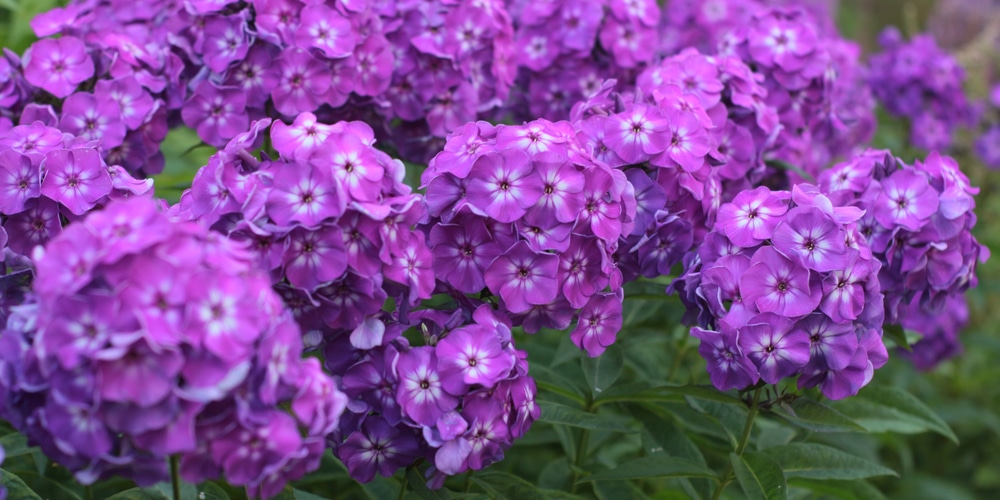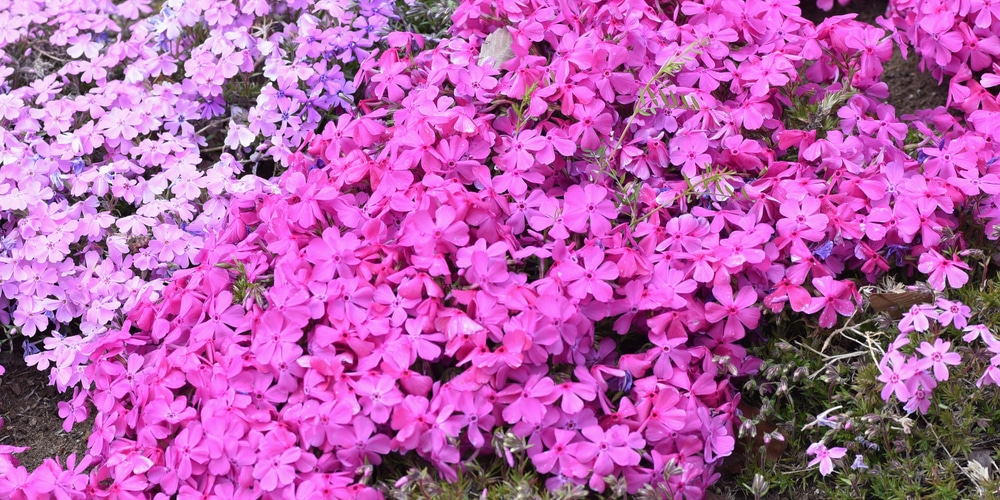Do you have a beautiful garden full of colorful flowers? One of the most popular choices for home gardens is phlox. These delicate-looking blooms come in a variety of colors, including blue, magenta, pink, purple, and white.
Phlox plants’ fragrant flowers typically bloom in the spring and summer, attracting different types of bees and other pollinators in equal measure.
What Animal Eats Phlox?
They’re a popular choice for borders, ground covers, and rock gardens. But what you may not know is that phlox can also be a tasty treat for some animals.
Keep reading to learn more about what animals eat phlox and how you can keep your plants safe.
What is Phlox?
Phlox is a genus of about 60-70 species of annual and perennial plants in the family Polemoniaceae. They are native to North America, with some species also found in Europe and Asia.
Phlox plants are mostly herbaceous, meaning they have soft leaves and stems that die back down to the ground at the end of the growing season.
The name “phlox” comes from the Greek word for flame, referring to the bright colors of the flowers. Phlox plants are relatively easy to grow and care for, making them a popular choice for home gardens.
They typically grow to be about 2-4 feet tall and can spread to be about 2-3 inches wide, depending on the cultivar. Phlox plants prefer to grow in moist but well-drained soil in full sun to partial sun.
They are relatively drought-tolerant and don’t need to be fertilized often. It’s important to deadhead the spent flowers regularly to encourage new growth.
What Animals Eat Phlox?
The list of animals that eat phlox includes both herbivores (plant-eaters) and omnivores (animals that eat both plants and animals). Some of the most common animals that eat phlox are rabbits, deer, groundhogs, and voles.
The eastern cottontail rabbit (Sylvilagus floridanus Allen) and the white-tailed deer (Odocoileus virginianus Boddaert) are especially fond of phlox plants.
Rabbits make sharp cuts (that can be compared to scissors) to plant parts when chewing them off. Unlike rabbits, a deer’s bite will have a more rugged finish, while groundhogs are downright messy eaters that tear up plants. Voles are known to be voracious eaters and dedicated herbivores.
If you don’t have the luck of catching the thief of your beautiful phlox plants in the act, you just have to play Columbo as well as look for other signs. You can use signs such as the chewing patterns mentioned above, poop clues, and even footprints.
Deer and rabbits can be easy to catch if you are looking for poop clues since the two are infamous pellet leavers when it comes to feeding. Footprints will give you a more conclusive idea of what animal is munching on your plants besides just telling you that some four-legged creature was there.
If you can’t clearly see the prints, dusting the area close to the damage using lime or flour should give you a better idea of whose prints those are.
How to keep your Phlox safe from animal eaters?
The following are some tips on how to keep your phlox plants safe from animal eaters:
1. Use physical barriers
Physical barriers such as fences can be effective at keeping animals away from your phlox plants. Make sure the fence is tall enough (at least 2 ft high) and buried deep enough (at least 6 inches deep) into the ground to deter animals from digging underneath it.
2. Use chemical repellents
There are a variety of chemical repellents on the market that can be effective at deterring animals from eating your plants. Be sure to follow the directions on the label carefully and reapply as needed.
3. Organic repellents
Organic deterrents like fox urine can effectively keep animals away from your plants. However, you have to keep in mind that using such a deterrent can attract foxes that may be in your neighborhood, and this can be a bad thing for your small family pet.
4. Modify your habitat
You can also try to modify your habitat to make it less attractive to animals. This may include removing sources of food and water, as well as hiding places for animals to hide.
5. Use scare tactics
Try using scare tactics to keep animals away from your plants. This may include using loud noises or bright lights. However, you have to be careful with this approach as it can be troublesome in some neighborhoods.
6. Use a predator or trap
If all else fails, you can try using a predator or trap to catch the animal that’s been eating your phlox plants. This is definitely not a humane option, but it may be the only way to get rid of the problem.
What Animal Eats Phlox?: Conclusion,
If you’ve been trying to figure out what animal has been eating your phlox plants, you now have a better idea. All that you have to do now is to take the right measures to deter such animals from coming into your yard and eating your plants.
The longer you wait, the more damage the animals will cause, and the harder it will be to get rid of them. Be sure to try a variety of different methods to find one that works best for you and your phlox plants.
Related Article: Can Creeping Phlox Grow in Shade?


